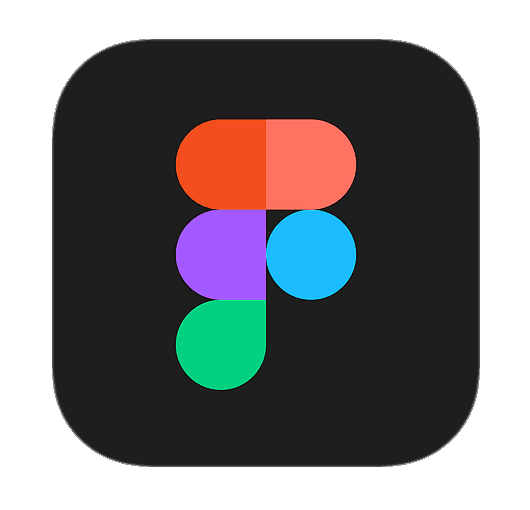Project Description
Designed a cost intelligence web application for the UK construction industry, from the ground up, adapting through different pivots and helping it raise over $900,000, sign 10+ paying clients, and save 100s of hours for construction teams, through automation and clean UX.
Role
Founding & Sole Product Designer
Responsibilities
User Research, High-Fidelity Interface Designs, Interactive Prototypes, UX Writing, Usability Testing, Brand Design
Timeline
Jul 2022 - Nov 2024
Tool Stack

Figma

Miro

Mixpanel

Hotjar

Product Fruits

Airtable
Overview
The UK construction industry is plagued with significant inefficiencies in hiring, project management, and cost tracking. Coreloops (formerly known as GigBridge) began by solving one part of the problem - sourcing vetted skilled workers for contractors, but the vision grew broader as we uncovered deeper operational gaps.
Cash flow issues, lack of financial visibility, and highly manual processes in the day to day of contractors prompted a pivot from being a marketplace to construction operations management and then financial management powered by artificial intelligence.
My Role
As the product evolved from GigBridge to Coreloops, my responsibility was to lead all aspects of product design, from initial research to high-fidelity designs, prototyping, and continuous iteration across all the eras and pivots, adapting to both user needs and business goals, shaping and reshaping the product experience to solve these new challenges.
Impact
Over $900,000 raised with the help of interactive prototypes used in accelerator pitches (BlueScope, Morgan Stanley, Google etc.)
10+ contractor companies signed up as active clients before I left the company.
Hundreds of hours saved weekly for clients through automation and streamlined workflows.
Clients replaced dozens of spreadsheets with our unified, intuitive platform.
Featured as a Top 50 ConTech Startup by CEMEX Ventures.
Robust Design System built from scratch, enabling rapid design and dev alignment.
Core design features were repeatedly praised for their usability and business alignment
Design Process
My design process at Coreloops closely followed the double diamond process. It usually starts off with ideas being conceived - these ideas could be internal or external. I’ve broken it down in a few steps.
Read More
The Marketplace Era & Business Challenges (2022)
The early version of Coreloops, branded as GigBridge, operated as a two-sided marketplace connecting construction workers to short-term jobs. It supported contractors who needed to hire subcontractors and individual workers quickly.

GigBridge Marketplace User Personas
Business Problems We Faced:
Payment delays affected cash flow: Many contractors took up to 90 days to pay us, while we had to pay workers weekly. This exposed flaws in running the marketplace model sustainably.
Unreliable workers: It was time consuming to source for quality workers and jobs with no guarantee of connection (and therefore commissions), with some workers not showing up after committing to jobs, thereby hurting the brand's credibility.
Marketplace UX Problems Solved
Fixing Onboarding drop-offs: The original signup flow required workers to upload right-to-work documents, certification cards, and other verifications before progressing, which caused high abandonment. I led a small team to setup funnels on Mixpanel to track drop-offs. We also monitored user activity on Hotjar and ran usability tests with real users to get insights. This revealed key drop-off pages and actions. We restructured onboarding to make it shorter, we made verifications optional and allowed users to return later. This improved the completion rate of the onboarding flow.
Profile Completion: We introduced a profile completion checklist and guide after onboarding to help users complete missing parts of their profiles.
Mobile-Responsive Design: Most workers accessed the platform via mobile devices. We designed all flows for an optimised experience on mobile devices.
Worker discoverability: Contractors needed to find relevant workers quickly. I designed a worker search experience with advanced filters (by trade, availability, location, distance, experience etc). Contractors could then find their perfect match for any job.

Worker profile checklist guide

Mobile screens of the worker profile through different states

Interactive prototype of a contractor searching and filtering for workers
Pivot From Marketplace to Construction Project Management (2023-2024)
As the marketplace model proved unsustainable, we made a strategic pivot. We moved from being just a marketplace to providing project management tools for contractors.
Initially, we had built tools like Directory, Timesheets, Payslips, Invoices & Payments to support post-hiring workflows. These tools became the foundation of the new platform.
We also introduced a central Projects hub that allowed contractors to bring their real-world projects into the system, along with their existing subcontractor relationships.
Realisation: This pivot showed us a key insight: everything in construction ends up as a cost (invoices, purchase orders, quotes, timesheets etc), and contractors were juggling all of this across multiple spreadsheets. It was manual, tedious, and they were drowning.
We phased out the marketplace entirely and focused fully on helping contractors manage and make sense of their costs. That’s how Coreloops was born.
Coreloops transformed into a platform for managing project finances, streamlining documentation, and improving cost visibility, with new tools like the Cost Reports Dashboard, Documents Manager, Progress Tracker, and improved Directory forming the core of the new product.
Adapting the Product - UX & Design Adjustments from the Pivot
The pivot to finance management brought a shift in audience, use cases, and expectations. While we didn’t overhaul the UI and experience all at once, we made continuous improvements over time. Many financial tools were already in place within GigBridge, so when we transitioned to Coreloops, we focused on refining the experience to align with our new user base and brand.
Key changes included:
User persona overhaul: Transitioned from jobseekers and site managers to commercial managers, finance teams, and directors.
Fast rebranding using Figma variables: I had set up design tokens early on, which allowed us to swiftly update themes, colors, and typography across the product by simply switching tokens.
Navigation adjustments: Shifted focus from jobs and gigs to cost-driven project dashboards.
Design system evolution: Components were gradually updated to support more data-heavy UIs, without needing a ground-up rebuild.
New website design: We redesigned the marketing site to match the new Coreloops brand and value proposition.

Design system tokens set up in Figma to enable the transition.

Website evolution over the years.
Cost Reports Dashboard
One of the most transformative features we built was the Cost Reports Dashboard. A powerful interface that gave contractors and finance teams real-time visibility into project costs. It became the central intelligence layer of Coreloops, enabling users to monitor budgets and spend at a glance, and drill deeper into their cost codes and documents.
The challenges contractors faced:
Data fragmentation: Costs were previously buried in multiple spreadsheets scattered across emails.
No cost visibility: Users lacked a way to see how much they were spending per supplier or project.
Approval bottlenecks: Managers often didn’t know which items were pending approval.
Data accuracy concerns: Clients worried about duplicates or wrong entries.
How we solved this:
We unified cost data across all documents, making it accessible via a centralised dashboard.
We introduced cost tagging to relevant cost codes (categories), allowing users to break down total spend by sections of the project. e.g Electrical, Plumbing etc.
We introduced teams, so all responsible parties could see this dashboard. e.g Finance teams.
Implemented document review mechanisms to ensure accuracy.
As a result:
Time savings: Commercial managers who spent hours weekly reconciling spreadsheets could now view insights in seconds.
Adoption driver: It became the most used feature on the platform and was directly responsible for closing multiple leads.
Trust & accountability: Contractor's internal teams gained a shared source of truth for cost performance monitoring.

Cost Reports Dashboard for a project

Granular breakdown of project costs by Cost Codes
Documents Manager
The Documents Manager was another key value driver and USP. It began as a central place for reviewing cost documents like invoices, POs, and quotes, helping contractors organize what was previously scattered across email and paper. Over time, it evolved into a powerful document processing, storage and creation tool.
The Challenges Contractors Faced:
High volume: Some clients had thousands of legacy documents to upload and process.
Manual input: Entering project, amount, and supplier data while processing was tedious and error-prone.
Scattered storage: Cost documents were typically scattered across multiple email threads.
How we solved this:
Introduced a system where users could forward documents to a dedicated email address thereby automatically uploading files into Coreloops and queuing them for review.
Implemented OCR and AI to extract metadata (e.g. supplier, amount, VAT, dates) and auto-fill fields, drastically reducing manual review time.
Enabled users to link cost documents to cost codes while reviewing, this automatically updated their cost reports dashboard.
Users could also split costs across multiple cost codes for invoices that included spend across different categories.
Implemented smart tagging based on historical patterns. For example, if a supplier was consistently linked to a specific cost code, new invoices from that supplier were automatically tagged accordingly, accelerating the review process.
Allowed users to create invoices, POs, and quotes directly within Coreloops.
Synced cost documents with external accounting systems.
As a result:
Massive time savings: Helped users process large volumes of documents in shorter periods with minimal friction.
Smarter organisation: Reduced cognitive load by tagging and auto-categorising files.
Adoption driver: The split-cost and AI review features, working directly with the Cost Reports Dashboard were highly requested and directly influenced client sign-ups.

Documents manager section showing a list of processed invoices

Invoice review process with AI OCR pre-filling fields read from the invoice
Timesheets
Timesheets are a fundamental part of construction projects, they’re how most labour costs are calculated. It’s a major pain point for construction companies, and one of the most sought-after features we built.
We first introduced it during the GigBridge marketplace era to help contractors and workers track and settle on attendance and hours which was in turn used to calculate and process payments. As we transitioned into Coreloops, we redesigned it to fit cost reporting needs, turning timesheet data into financial data that fed into the cost reports dashboard.
Issues Faced:
Disconnected workflows: Timesheets existed separately from cost tracking, requiring manual calculation and re-entry into spreadsheets for reporting.
Manual calculations: Projects involved multiple workers(with varying pay rates) every week and calculations had to be done in spreadsheets, one wrong formula could go unnoticed and have negative ripple effects.
Diverse formats: Different contractors captured timesheet data differently. Some tracked total hours, others total days, and overtime hours/pay was often also handled in different ways. The system needed to be flexible enough to support all formats while preserving data integrity.
Approvals & Disputes: Supervisors needed a fast way to approve or dispute submitted hours with workers.
Solutions:
We integrated Timesheets with the cost reporting system through cost codes. Each approved timesheet could be linked to a cost code that in turn updated the cost reports dashboard.
Introduced 'Placements' to store worker details per project such as pay rate, overtime rate etc. This way the accounting team only needed to set this once and it was applied across every week of the project.
Design ways to allow contractors switch their data entry modes.
Introduced Timesheet approvals via Whatsapp and SMS. This helped workers to approve or dispute their timesheet hours without needing to create an account or sign into the product.
Designed bulk actions to help users apply similar actions to multiple timesheets.
As a result:
Reduction in timesheet processing time from hours to minutes.
More consistent and accurate data as error prone spreadsheet formulas were eliminated.
Data flowed automatically into cost dashboards, eliminating double entry.
Supervisors saved time with bulk reviews and approvals.
Finance and commercial teams gained clarity on labour costs across projects, improving forecasting.

Timesheets page showing timesheets grouped by project.

Timesheets Placement Details page for a worker showing their settings

Viewing the timesheet of a particular worker for a given week
Interactive demo showing some sections of the timesheet flow.

Workers approving timesheets via Whatsapp
— in progress —
Bill of Quantities
Valuations
Settings



